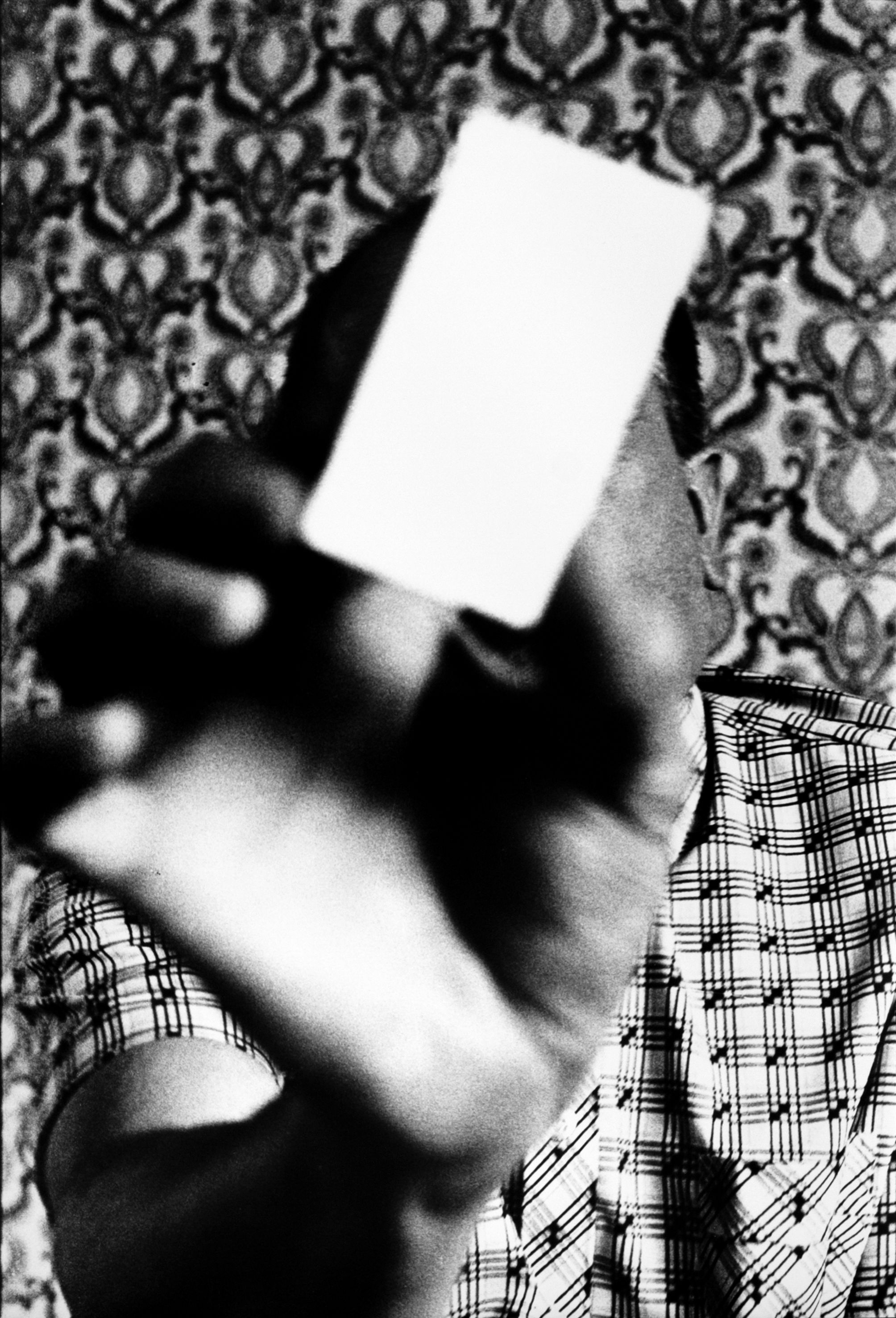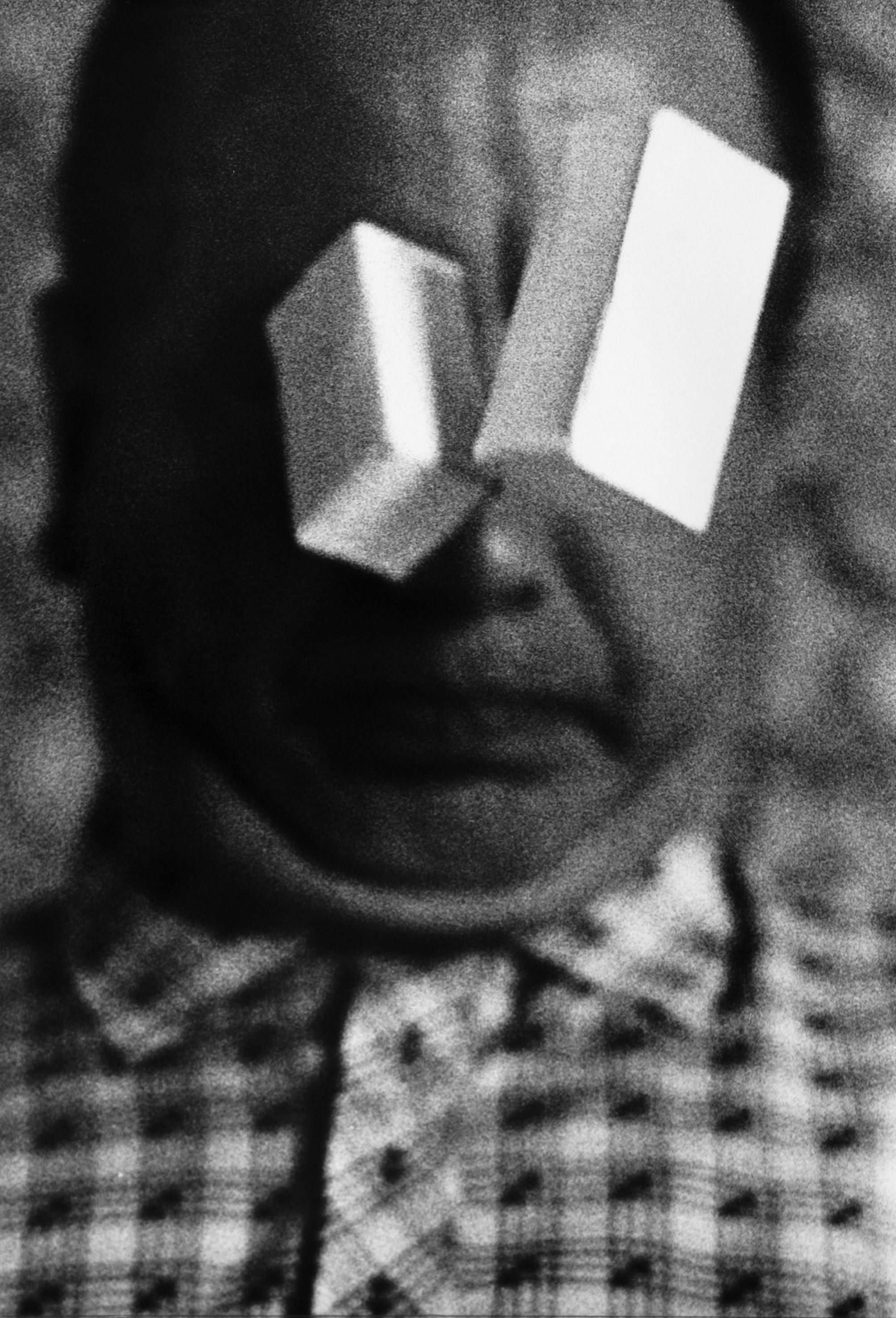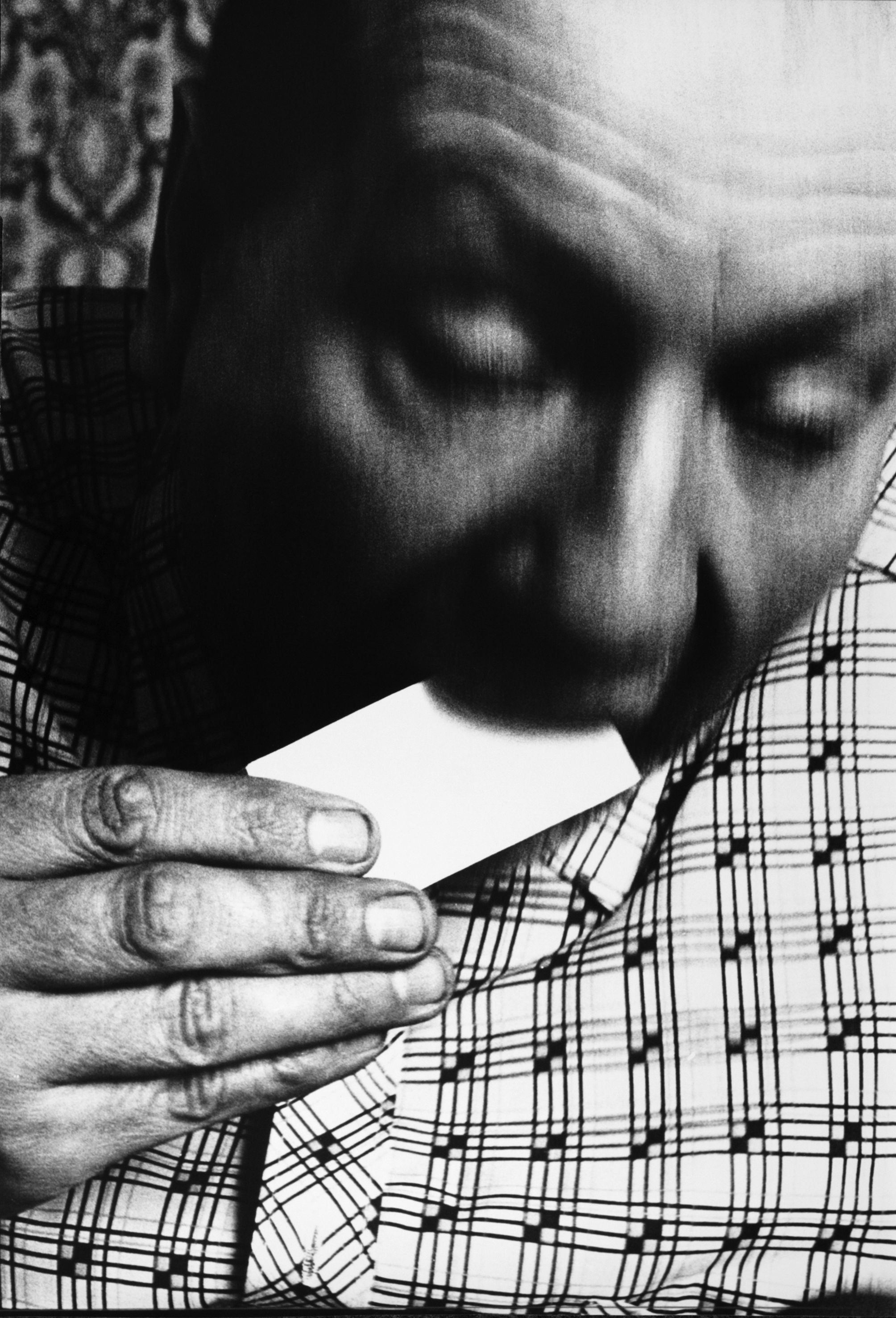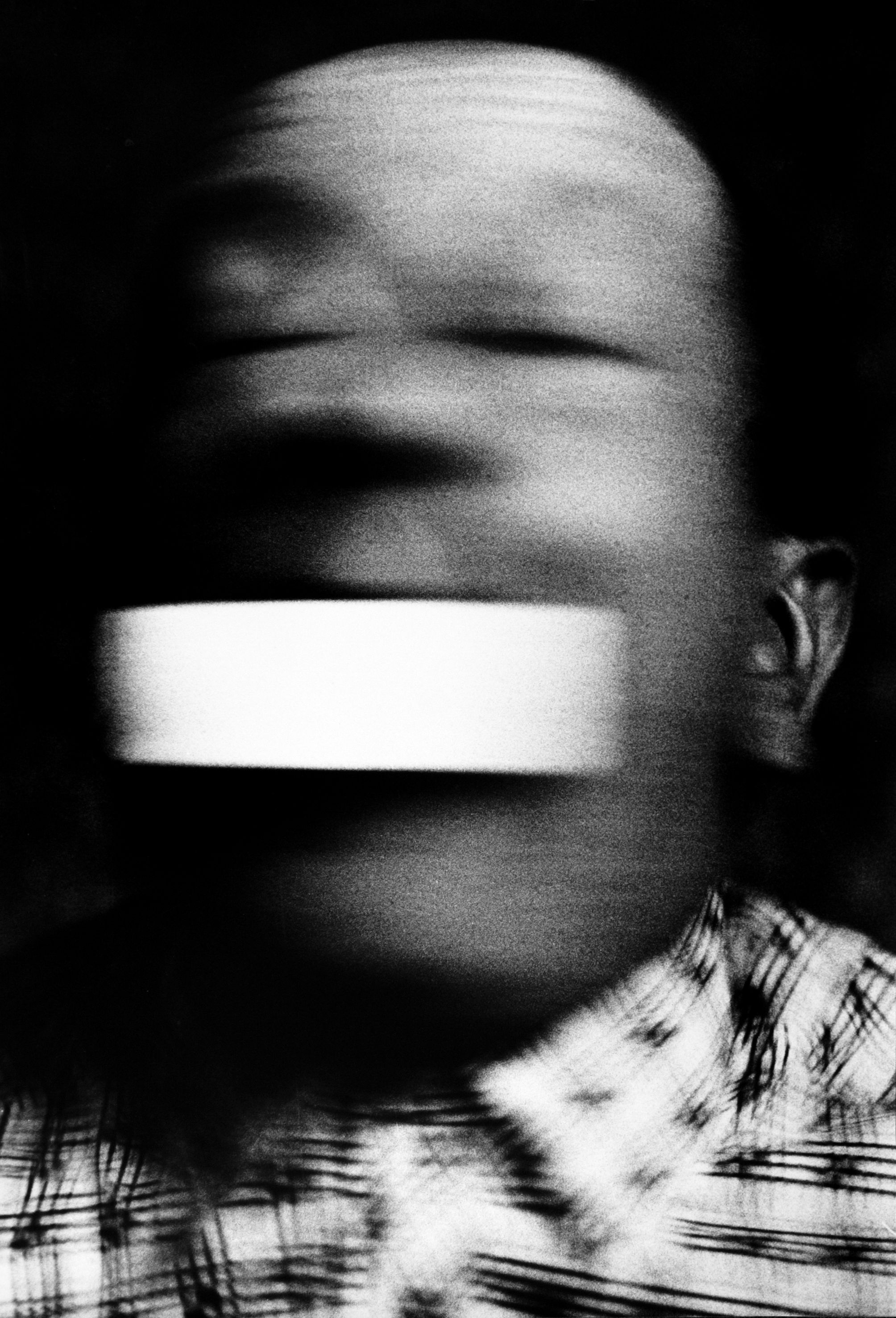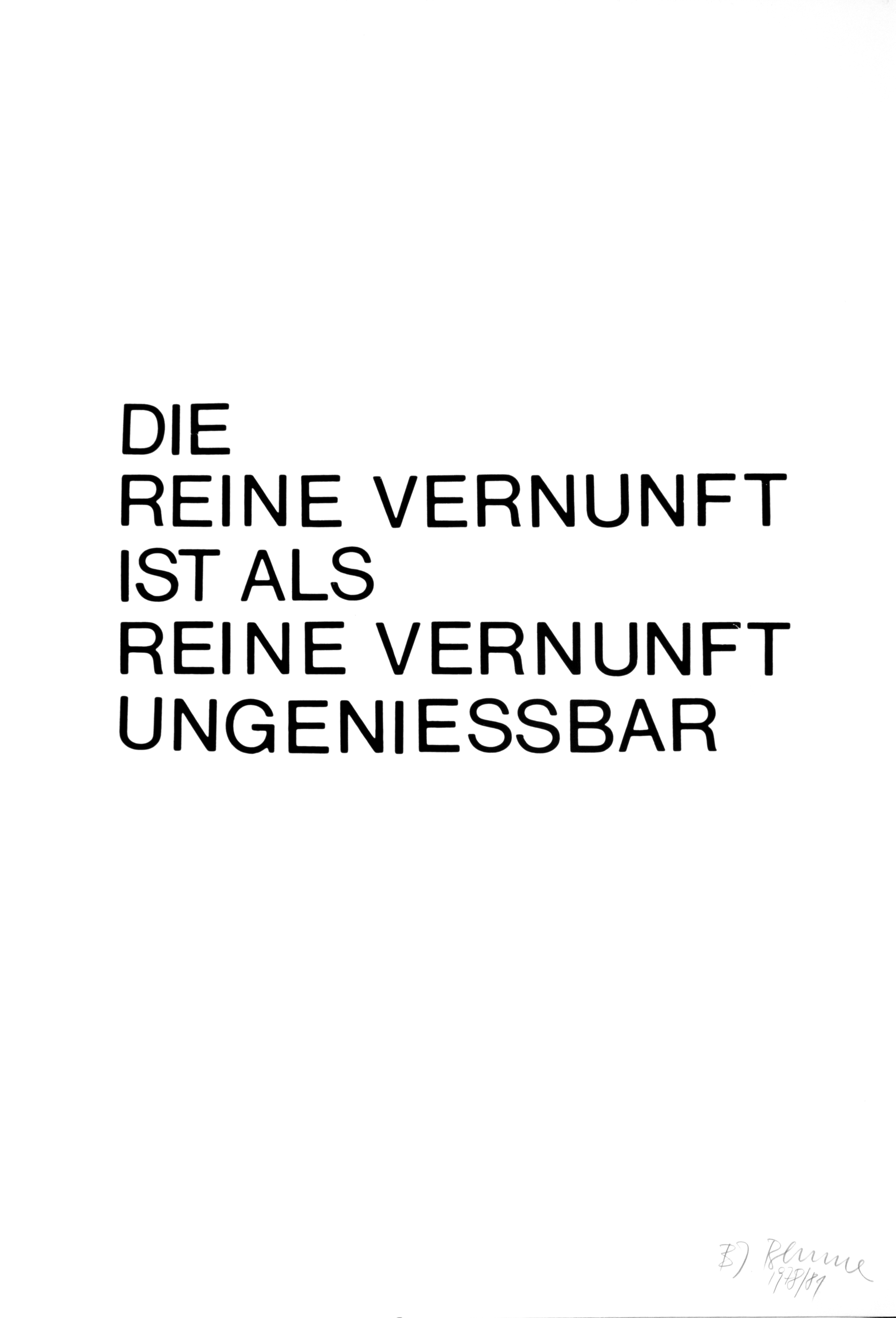Four photographies and one text sheet on photographic paper
Dimensions: 76 x 50 cm each
Signature, inscriptions, markings: signed and dated at the text sheet verso at lower right
Accession Number: 1001548.1–4
In a sequence of four photographs and a sheet of the same size, which contains the accompanying text Die reine Vernunft ist als reine Vernunft ungenießbar (Pure reason is inedible as pure reason), Bernhard Johannes Blume has vividly formulated his examination of Immanuel Kant's Critique of Pure Reason1.
The leitmotif is an indefinable white object in the form of a cuboid, with which Blume himself performs all kinds of actions. First, he holds the object, whose rectangular shape corresponds to the format of the page, towards the camera in such a way that his face is covered by the hand, which is magnified in close-up. His person thus disappears into anonymity. Blume slips into the role of the petit bourgeois (small-checked shirt, wallpaper) in order to stage the encounter between "pure reason" and "everyday world of experience".
After presenting the viewer with the object in the first sheet, he takes a closer look at the "funny thing" itself. Two white cuboids of different sizes, suspended in the air, each conceal one of the artist's eyes. Immediately in front of his face, which is contorted into a grimace, these objects seem to irritate him. In the third shot, this time with his face uncovered but blurred and his eyes closed, he tries to put the square object in his mouth. He almost succeeds, but the shape is too angular and obviously inedible.
Like a dog with its bone in its mouth, Blume, whose face in the fourth photograph is blurred by the violent movement, shakes himself. Presumably he is trying to get rid of the inedible something. The writing at the end of the sequence is highlighted like a realization: Pure reason is inedible as pure reason.
Through visual features that Blume attributes to the abstract term "pure reason," he attempts to illustrate it via a corresponding object.
"I present here in the photograph a structure with rational edges. It appears slightly blurred from this close-up view. In its ideal white cleanliness, it stands for order and cleanliness, for the technoid, the rational, which is why it is angular and not round. "2
But the abstract and the concrete cannot be united, just as pure reason and the human senses cannot. With his photographically authenticated five-part experimental arrangement, Blume proves, in an artistic variation of Kant's form of "Critique," the incompatibility of the senses ("enjoyment") with "pure reason". Against the suppression of the felt world in the name of its purely rational comprehension, Blume, taking Kant as a starting point, aims even today at a balance of empirical understanding and intuition, from which reason is to emerge.
Jari Ortwig
1 Immanuel Kant, Critique of Pure Reason (21787), in: Kant's Collected Writings, ed. by the Prussian Academy of Sciences, Dept. 1, Vol. 4, Berlin 1911.
2 Bernhard Johannes Blume, quoted from: Ders, Hellsehen als Schwarzsehen. Quasiautobiographische Bemerkungen zu einigen Fotosentenzen 1971-1984, ed. by Michaela Schleunung, Munich 1986, p. 7.
